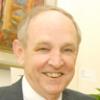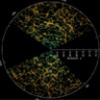Presentations highlight value of supercomputing to research, industry
Press Releases
Primary tabs
Columbus, Ohio (Nov. 8, 2011) – William H. Miller, Ph.D., professor of chemistry at the University of California, Berkeley, will deliver the 2011 Pitzer Lecture in Theoretical Chemistry at 4 p.m., Wednesday, Nov. 9 in Room 2015 of McPherson Laboratory, 140 W. 18th Ave., on the main campus of The Ohio State University.
Akron team leverages supercomputers to better understand tie molecules
Columbus, Ohio (Oct. 5, 2011) –A special configuration of carbon atoms – a cylindrical network of molecules known as carbon nanotubes – is attracting a great deal of attention from industry researchers these days.
Columbus, Ohio (Sept. 15, 2011) – Ohio's statewide higher education technology consortia have been reorganized today under an umbrella organization known as the Ohio Technology Consortium (OH-TECH), according to an Ohio Board of Regents (BOR) directive.
Visualizations will allow students with mobility impairments to explore caves
Columbus, Ohio (Aug. 17, 2011) – College students with mobility impairments who are studying for a career in the geosciences will soon be able to explore a computer-generated simulation of a large cave system to meet the degree requirements of field-based learning experiences.
Algorithm searches for models that best explain experimental data
Columbus, Ohio (Aug. 2, 2011) – A Franklin University professor recently developed an evolutionary computation approach that offers researchers the flexibility to search for models that can best explain experimental data derived from many types of applications, including economics.
Columbus, Ohio (July 25, 2011) - A partnership of 17 institutions today announced the Extreme Science and Engineering Discovery Environment (XSEDE). XSEDE will be the most advanced, powerful, and robust collection of integrated advanced digital resources and services in the world.
Grad student leverages supercomputer to fine-tune aerodynamics
Columbus, Ohio (July 21, 2011) – Building a battery-powered land speed vehicle capable of achieving a speed of 400+ miles per hour requires innovative components, corporatepartnerships, hours of diligent preparation and a powerful supercomputer.
COLUMBUS – July 14, 2011 – The Ohio Supercomputer Center (OSC) has selected 15 middle school students to explore and address complex environmental watershed issues that impact the state as participants at the twelfth annual Young Women’s Summer Institute.
Simulations improve characterization of cosmology’s ‘standard ruler’
Columbus, OH (July 12, 2011) – Ohio State University researchers are leveraging powerful supercomputers to investigate one of the key observational probes of “dark energy,” the mysterious energy form that is causing the expansion of the universe to accelerate over time.








